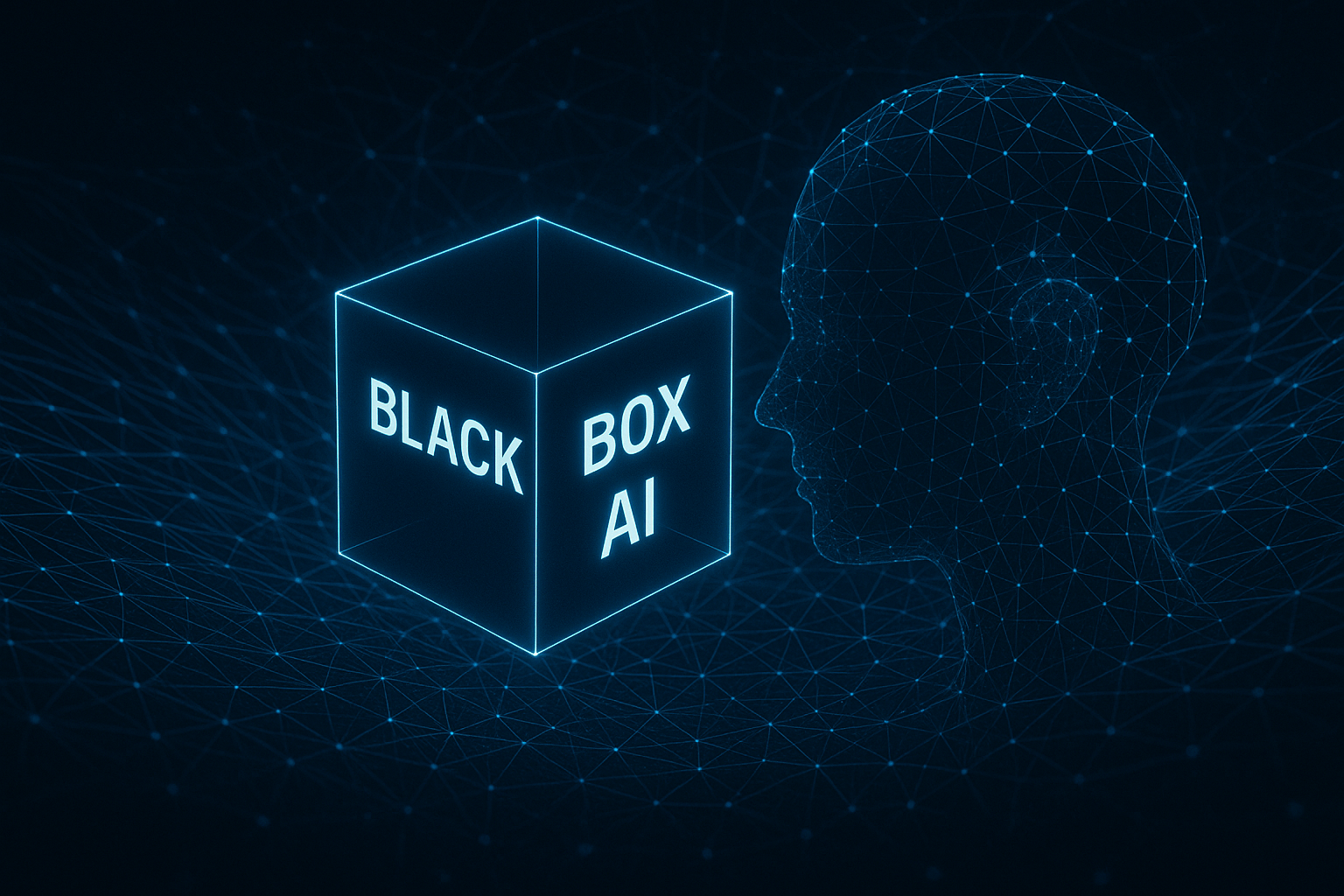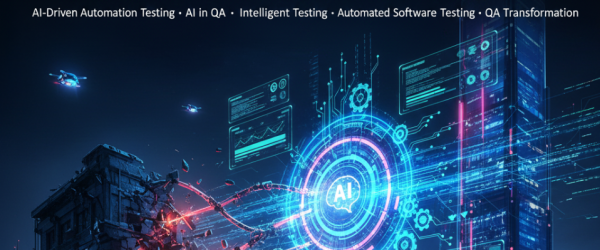Introduction to Black Box AI
Why Is Everyone Talking About Black Box AI?
If you’ve heard the term “Black Box AI” floating around in tech circles, media, or even among regulators, you’re not alone. The term evokes a sense of mystery—and for good reason. These are systems that make decisions we rely on every day but often can’t explain how or why they arrived at those decisions.
The Growing Influence of AI in Our Lives
From facial recognition and healthcare diagnostics to social media algorithms and loan approvals, artificial intelligence is rapidly becoming the invisible hand shaping our world. But what happens when these systems make errors—or worse, biased or unethical decisions—and we can’t even peek inside to understand why?
What Is Black Box AI?
A Simple Analogy to Understand the Concept
Imagine you’re baking a cake. You add flour, sugar, eggs, and butter, then put it in an oven. After some time, you get a cake. Now, imagine that instead of an oven, you put your ingredients into a mysterious machine. You don’t know what happens inside—it just gives you a cake. That’s what a Black Box AI is. You feed it data, and it gives you an output—but the internal process is hidden, complex, or incomprehensible.
How It Differs from Transparent or “Glass Box” AI
Glass Box AI models, on the other hand, are like cooking with a clear oven door and a recipe. You can see what’s happening and understand each step. Transparent AI models let humans trace the logic and ensure ethical, accurate, and consistent decisions.
How Black Box AI Works
Deep Learning and Neural Networks Behind the Scenes
Black Box AI typically relies on deep learning—a form of machine learning modeled after the human brain’s neural networks. These models can have millions (or billions) of parameters working together in non-linear ways, which makes understanding the decision-making process extremely difficult.
From Data to Decision — What Happens Inside the Box?
Once trained, the AI takes input data, passes it through many layers of computation, and spits out a prediction or decision. But these layers act like tangled webs—each neuron processing tiny bits of information. While this structure is powerful, it’s not easy to interpret.
Why Black Box AI Exists
Complexity of Modern Algorithms
Black Box AI isn’t intentionally mysterious. It’s just that the models are so complex and data-rich that understanding every interaction between variables becomes practically impossible.
Trade-offs Between Accuracy and Interpretability
Often, more interpretable models (like decision trees or logistic regression) are less accurate with large and complex datasets. So, engineers opt for the more accurate—but less transparent—black box models, especially when stakes are high.
Real-World Applications of Black Box AI
Healthcare Diagnosis Systems
In medicine, Black Box AI models can analyze thousands of scans in seconds, identifying diseases faster than humans. But if the system flags a tumor and a doctor asks “why?”, the AI often can’t answer.
Financial Credit Scoring and Risk Management
Banks use AI to decide if you’re creditworthy. If you’re denied a loan, you’d want to know why—but often, the model’s decision can’t be broken down into understandable reasons.
Autonomous Vehicles and Navigation
Self-driving cars rely on AI to process images, maps, and driving rules. Yet, when an accident happens, it’s not always clear which decision caused the error.
Legal and Judicial Decision Support
AI is even used in courts to assist with sentencing and bail decisions. One such tool—COMPAS—has been accused of racial bias, and since it’s a black box, the basis of its predictions remains hidden.
The Dark Side: Why You Should Be Concerned
Lack of Explainability in Critical Scenarios
When AI makes life-altering decisions—about your job, loan, or health—you deserve to know why. But with black box models, there’s often no clear explanation.
Ethical Dilemmas and Bias in Algorithms
AI can inherit human biases from the data it’s trained on. If this data is skewed, the results will be too—and if we can’t see inside, we can’t correct it.
Legal and Regulatory Challenges
Laws like GDPR already demand explanations for automated decisions. As more regulations emerge, companies may find themselves on the wrong side of the law if their AI systems can’t explain themselves.
Case Studies of Black Box Failures
The Amazon Hiring Tool Bias
Amazon built a hiring AI trained on resumes over a decade. But the model penalized female candidates because past data favored men. Amazon scrapped the tool—but it’s a wake-up call.
COMPAS Algorithm in U.S. Criminal Justice
COMPAS assessed the risk of reoffending in defendants. Investigations revealed racial bias, but developers refused to reveal how the system worked—because it was proprietary.
The Importance of Explainability
What is Explainable AI (XAI)?
Explainable AI aims to make AI decisions understandable to humans. It helps organizations ensure fairness, compliance, and trust in AI systems.
How Transparency Builds Trust
Imagine trusting a GPS that tells you to take a left turn off a cliff. You’d want to know why it made that recommendation, right? Transparency reassures users and prevents blind trust in flawed systems.
Techniques to Interpret Black Box AI
LIME (Local Interpretable Model-Agnostic Explanations)
LIME explains individual predictions by approximating the model locally with a simpler, interpretable model.
SHAP (SHapley Additive exPlanations)
SHAP uses game theory to explain the contribution of each feature to the prediction, offering insights that are mathematically grounded.
Model Distillation
This approach involves training a simpler, transparent model to mimic the behavior of a black box—offering a high-level understanding without full disclosure.
Industry Response and Regulations
The EU’s AI Act
Europe is leading the way with the AI Act, which classifies AI risks and mandates transparency in high-risk systems.
U.S. AI Bill of Rights
The U.S. is pushing for AI accountability and transparency through its “AI Bill of Rights,” encouraging responsible innovation.
Corporate Initiatives for Responsible AI
Tech giants like Google, Microsoft, and IBM are investing heavily in responsible AI programs to promote explainability and fairness.
Should We Eliminate Black Box AI?
Pros and Cons of Black Box Approaches
Black Box models often deliver state-of-the-art performance, especially in image and speech recognition. But they’re risky when human lives or rights are at stake.
When It’s Acceptable — and When It’s Not
Black Box AI might be okay in Netflix recommendations—not so much in hiring decisions or medical diagnoses. It’s all about context.
The Future of AI Transparency
Research Directions in Interpretable AI
Researchers are exploring new architectures that offer both high accuracy and explainability. Hybrid models may bridge the gap.
Open Source Models and Community Scrutiny
Transparency improves when AI models are open-sourced. Communities can inspect, critique, and improve them together.
What You Can Do As a Business Leader or Consumer
Questions to Ask About AI Tools You Use
- Does this tool explain its decisions?
- Can we audit its outcomes?
- What data was it trained on?
Advocating for Ethical and Transparent Technology
Support vendors and policies that promote fairness, transparency, and explainability. The more we demand it, the more the industry delivers.
Conclusion
Black Box AI is one of the most powerful—and controversial—technological advancements of our time. While it enables remarkable feats, it also brings significant risks if left unchecked. As we continue integrating AI into critical areas of life, the demand for transparency, fairness, and ethical responsibility will only grow. It’s not just about building smarter machines—it’s about building trust in them.
FAQs
What is the biggest problem with Black Box AI?
The lack of explainability. If an AI system makes a decision, users often can’t understand or question how it arrived at that result.
Can Black Box AI be made fully transparent?
Not entirely, but techniques like LIME and SHAP help make individual predictions more understandable.
Are there laws to prevent unethical AI use?
Yes. The EU’s AI Act and U.S. regulations are actively shaping how companies must manage AI ethics and transparency.
Is Explainable AI always better than Black Box AI?
Not always. Black Box AI may offer better performance in complex tasks, but Explainable AI is crucial in high-stakes scenarios.
How can I know if a product I use is using Black Box AI?
Ask the provider about their model type and whether it offers explainability. Ethical companies will disclose this.







